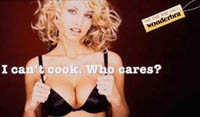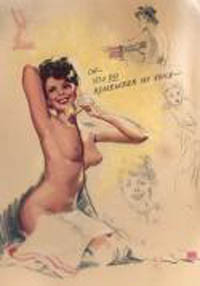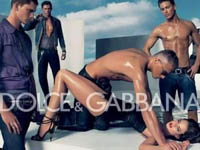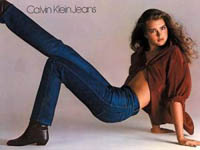Sex and Advertising
It’s often been said that “you never get a second chance to make a first impression”. Nowhere is this statement more powerful than the mainstream media’s ability to use the “erotic approach” in advertising. We live in an age where we are inundated by media imagery on a 24/7 basis. Thus, creating that magical first impression in a 15- 30 second ad is critical as to whether a product is viewed by audiences in a powerful enough way to lead them to purchase it. The goals in that short time span of a TV ad, for example, are to paint a picture through visual imagery and sound that gets and holds ones attention, provoke a state of arousal and achieve a desired response. One recent ad I have seen repeatedly that inspires my imagination and spurs my fantasies is one that depicts carefree, sexy, attractive couples romping on a white sandy beach with enveloping blue skies, enjoying a loving embrace. The music is a lively, catchy tune whose lyrics sing,” It’s better in the Bahamas”. The use of double entendre certainly worked for me as I found myself singing the ad’s jingle periodically during the day without thinking. The viewer is left with a definitive message of fun, sun and passion which can prompt the stodgiest of us to abandon work and other responsibilities for a more glorious journey. It is part of a growing trend of “escape advertising” using subtle erotic images. We want to act on the fantasy, immediately jump on a plane and head to the islands for a week of excitement. In short, this is what constitutes a successful ad in the “biz” as they say. Remnants of early advertising have been found in ancient Egypt where papyrus was used to depict a sales pitch. Flyers were used in ancient Rome to advertise upcoming gladiator matches. Sexual content containing powerful innuendos and erotic imagery have been used for many years in a myriad of media formats to induce attraction to products and services. In the 1850’s advertisers learned that attractive women could sell a brand in ways that nothing else could do successfully. For example, since tobacco was almost always used by men at that time, well endowed women draped in erotic attire were used in cigarette ads that allowed men to fantasize about undressing them. By buying specific brands of cigarettes, men identified with the women who presented a brand of sexual excitement. One tobacco company even placed cards of sexy women inside the packs as men clamored to collect a whole set of these daringly photographed women. The most powerful communication in mainstream ads appears to be successfully accomplished through body language, attractiveness and erotic poses of the models, a few well chosen implicit phrases, facial expressions and the type of clothing worn or the lack thereof. The messages touch our core erotic desires. Viewers are drawn in and mesmerized by ads that promise or even hint at successfully getting “the girl” or “the man “depending on the target audience. Fragrances, clothing and alcohol have always been associated with more openly erotic images. Fragrances conjure up fantasies of being potential aphrodisiacs. For example, when a man sees an ad for a certain after shave that portrays him surrounded by gorgeous and sexy women the message is” If you buy this cologne , women like this will want to have sex with you too”. Another major ad included a very attractive women looking longingly into a young man’s eyes with the tag line” All my men wear English Leather, or they wear nothing at all.” No wonder this ad boosted sales by astronomical figures. Research has shown repeatedly that we respond most to the basic instincts of self-preservation, hunger, fear, anger, sex and sex is second only to self-preservation. Psychologists know that sexual desire and arousal is extremely powerful in moving a person forward in pursuit of the desired object. Since by all estimates the average person is exposed to over 1,500 ads per day from all mainstream venues, i.e. magazines, newspaper ads, billboards, television and the internet is it any wonder that “sex sells” in all of these venues? The masters of television commercials learned early on that the hint of providing a more exciting sexual lifestyle could promote anything from jeans to shampoo and everything in between. Calvin Klein was one such master at this craft in both mainstream television commercials and print ads. He pushed the envelope in the area of nudity and erotica to new heights making CK the most popular name in fashion. In 1980 he introduced perhaps the most controversial and memorable ad in history starring a fifteen year old Brooke Shields in a most provocatively limber pose uttering the line,” You know what comes between me and my Calvins? Nothing”. For the first time, ads such as these hit mainstream magazines such as Vogue, Harper’s Bazaar and Cosmopolitan. The floodgates opened and paved the way for companies such as Victoria Secret to feature chic supermodels in sexy lingerie. Their Super Bowl commercials and web-based fashion shows have tied up online traffic for hours after a spot is run. Between Calvin Klein and Victoria Secret they rack up over $17 billion in yearly profits. Put simply, nudity and partially clad beautiful people turn other people on, and arouse their deepest desires prompting them to spend money on those “must have” brands, even in a tumultuous economy. Advertising methods have and will continue to capitalize on our yearning for social acceptance, the desire to be beautiful and a glimmer of hope that we, too, can be sexy. The media portrays an ideal image of beauty and allows people to escape reality for just a moment……providing just enough of a promise of eternal youth, glamour and intoxicating sexual freedom to spark us to new heights of fantasy fulfillment in the making. Is it any wonder that Hollywood is known as the place where dreams are made?




